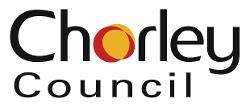About the council
Chorley Council is a local authority in central Lancashire that has been working for its communities since the formation of the Borough of Chorley in 1974. As an organisation, we strive to be forward thinking, inclusive, and innovative in order to deliver high quality and accessible services for our customers. Our current responsibilities include:
- bin collection
- recycling
- Council Tax collection
- housing
- planning applications.
Place
Covering 203 square kilometers, Chorley is characterised by its large amount of green space, with 30.9% of the population living in rural areas. In addition, Chorley has the 5th largest rural economy in Lancashire, with 37% of local businesses classified as rural.
To Chorley's eastern border lies the West Pennine Moor, which is sparsely populated. This is in contrast to the central spine of the borough, which is more urban. This comprises of Chorley town centre as well as major settlements close to the M6, M61, and A6 that run north to south through the authority, which make Chorley well placed for access to the major cities of North West of England. In the West, the borough merges into the Lancashire plain and is dotted with villages and hamlets.
People
Chorley's population stands at 119,522 and has been increasing steadily since the 97,000 recorded in 1991. It is estimated that between 2020 and 2043, the population of Chorley will increase by 13.1%.
The composition of the borough has also altered steadily over the years, as there has been an increase of residents from Black and Minority Ethnic (BME) groups and Lesbian, Gay, Bisexual, Transgender, Queer or Questioning (LGBTQ) and the population is becoming characteristically older. The 3 biggest ethnic groups in the borough are those from White (96.9%), Asian (1.6%), and mixed/multiple (0.9%) ethnic backgrounds. In addition, according to the 2011 census, 2% of the local population was born outside of the EU.
For more information, view our demographic profile in our Equality Scheme (PDF) [949KB] .
Local economy
Historically a mill town, the borough's industriousness has continued to the present as Chorley remains a great place to do business and an economic centre in the region, characterised by its famous market and the recently developed Strawberry Fields Digital Hub.
With major motorway and rail links to Manchester and Preston, including to Liverpool and Manchester Internal Airports, Chorley is an attractive place for people to live, work and visit. This is reflected in the borough's bustling population, which is consistently increasing.
The percentage of those who are economically active in the borough is higher than the North West average, standing at 79.8%. Of these, the biggest employment groups are managerial, professional, and technical occupations, accounting for 42.3% of the working population.
For more information about the local economy, view our NOMIS profile.
Health and wellbeing
Health and wellbeing considerations forms a critical part of the decision and policy making process at Chorley Council and we work closely with the Central Lancashire Integrated Care Partnership in order to improve health and care services in the borough.
Life expectancy in the borough is higher than the regional average, with life expectancy for men at 78.6 and women at 82.4. Additionally, the proportion of children who are classified as obese in year 6 remains under both the regional and national averages at 17.9%.
For more information about health and wellbeing, view our Public Health Profile.
Our vision
"Enabling strong communities, a resilient economy, excellent services, a greener future and successful people"
We have 4 priorities and series of objectives that establish how we will achieve this vision. These include:
1. Housing where residents can live well
- deliver affordable and energy efficient housing
- strive for good quality housing for all
- work with partners supporting new ways to prevent homelessness
- support our most vulnerable residents
2. A green and sustainable borough
- work towards our commitment to be carbon neutral by 2030
- support waste reduction, reuse and recycling
- work with partners to retain natural habitats and improve air quality
- promote sustainable transport and infrastructure
3. An enterprising economy with vibrant local centres in urban and rural areas
- support business growth and expansion across the borough
- work with partners to support skills development and innovation
- work with partners to promote the district as a visitor destination and attract investment in our local service centres
- promote the green economy
4. Healthy, safe and engaged communities
- support and encourage active lifestyles and health and wellbeing
- support development of leisure services and facilities meeting the needs of residents
- deliver events and places to go for everyone
- ensure all residents of all ages can access the services they need, physically and digitally
- promote resilient, cohesive neighbourhoods by listening and responding
- work with partners to join up public services so that they make sense for everyone
For more information on our vision, view our Corporate Strategy 2022.




